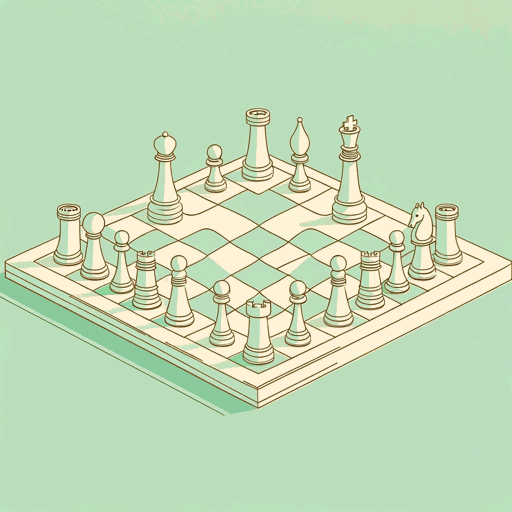85 pages • 2 hours read
Malcolm GladwellBlink: The Power of Thinking Without Thinking
Nonfiction | Book | Adult | Published in 2005A modern alternative to SparkNotes and CliffsNotes, SuperSummary offers high-quality Study Guides with detailed chapter summaries and analysis of major themes, characters, and more. For select classroom titles, we also provide Teaching Guides with discussion and quiz questions to prompt student engagement.
Summary and Study Guide
Overview
Blink: The Power of Thinking Without Thinking, Malcolm Gladwell's 2005 New York Times bestseller, describes how snap judgments, first impressions, and intuitions can be more useful than painstaking rational thought.
Blink contains three central ideas: “fast and frugal" thinking is a natural attribute of the human mind and often works better than slow-and-careful reasoning; this ability can be distorted or misled; and fast cognition can be trained and improved. The book’s six chapters provide examples from many walks of life—art appreciation, couples’ therapy, tennis, politics, marketing, law enforcement, classical music—where rapid judgment can quickly solve problems if used correctly.
The Introduction focuses on the Getty kouros, an ancient Greek statue that, if genuine, would be a highlight of the museum's collection. Careful scientific evaluation suggests the kouros might be authentic, but several antiquities experts merely look at the sculpture and declare it fake, which is later revealed to be the truth. How do the experts know immediately, and how could the scientists be fooled?
Chapters 1 and 2 delve into the mysteries of the human mind’s uncanny ability to almost instantly grasp situations in everyday life. In Chapter 1, married couples visit John Gottman’s “love lab," where their interactions are videotaped and pored over for signs of marital difficulty. Gottman can almost instantly determine whether a relationship is in trouble. Other researchers watch videos of doctors interacting with patients and can tell within seconds which physicians are likely to be sued for malpractice.
Chapter 2 describes how scientists alter test subjects’ behavior simply by changing a handful of adjectives in the test instructions. Speed dating participants sometimes know in seconds if they’re drawn to another participant, but their choices tend to differ from their descriptions of what they’re looking for.
Chapters 3 and 4 explore the ways in which rapid thinking can go wrong. Chapter 3 looks at “The Warren Harding Error," where people become mesmerized by a person’s appearance and draw erroneous conclusions about them. These errors arise from unconscious bias, which can be ferreted out with implicit-association tests that reveal prejudice among even the most open-minded people.
The main insight in Chapter 4 is that overthinking a problem can produce results much worse than simply respecting gut feelings. Marine Corps strategist Paul Van Riper joins a war game who leads a team against an American military strike force equipped with sophisticated computer analytics and massive data resources. Van Riper’s group uses instinct, intuition, and on-the-fly adaptation to best the military’s sophisticated metrics and calculations. Chapter 4 also describes how improvisational theatre troupes can create humorous stage plays with no rehearsal, and how an Illinois hospital uses a simple four-question checklist to improve heart-attack diagnoses by 70%.
Chapters 5 and 6 describe ways to improve insights and snap judgments with small tweaks and smart training. Chapter 5 provides examples of products that succeed or fail due to minor shifts in the ways they’re perceived by the public. Chapter 6 chronicles the tragic death of Amadou Diallo. In their excitement, plainclothes police misinterpret Diallo’s submissive face and gestures. One researcher, expert at reading the subtle clues from micro-expressions, teaches the skill to police, helping them avoid situations like the Diallo shooting.
The Conclusion relates how Abbie Conant, a female trombonist in a man’s musical world, wins an audition by performing while hidden behind a screen. The Afterword cites General Robert E. Lee’s victory at Chancellorsville as a lesson in the value of inventive, audacious tactics against overwhelming odds. Blink also contains Notes, an interview with the author, and a special section, “Questions and Topics for Discussion.”
Related Titles
By Malcolm Gladwell

David and Goliath: Underdogs, Misfits, and the Art of Battling Giants
Malcolm Gladwell

Outliers
Malcolm Gladwell

Talking to Strangers: What We Should Know About the People We Don’t Know
Malcolm Gladwell

The Bomber Mafia: A Dream, a Temptation, and the Longest Night of the Second World War
Malcolm Gladwell

The Tipping Point: How Little Things Can Make a Big Difference
Malcolm Gladwell

What the Dog Saw: And Other Adventures
Malcolm Gladwell

